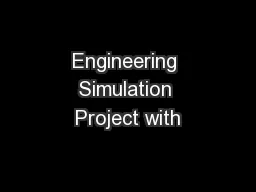PPT-Intro to Power Quality Prepared By: Theo Laughner, PE
Author : giovanna-bartolotta | Published Date : 2018-09-22
April 19 2017 A Typical Day In PQ How does a brown cow eating green grass make white milk Intro to PQ 2 Overview Power Quality Vs Reliability Power Quality Definition
Presentation Embed Code
Download Presentation
Download Presentation The PPT/PDF document "Intro to Power Quality Prepared By: Theo..." is the property of its rightful owner. Permission is granted to download and print the materials on this website for personal, non-commercial use only, and to display it on your personal computer provided you do not modify the materials and that you retain all copyright notices contained in the materials. By downloading content from our website, you accept the terms of this agreement.
Intro to Power Quality Prepared By: Theo Laughner, PE: Transcript
Download Rules Of Document
"Intro to Power Quality Prepared By: Theo Laughner, PE"The content belongs to its owner. You may download and print it for personal use, without modification, and keep all copyright notices. By downloading, you agree to these terms.
Related Documents














